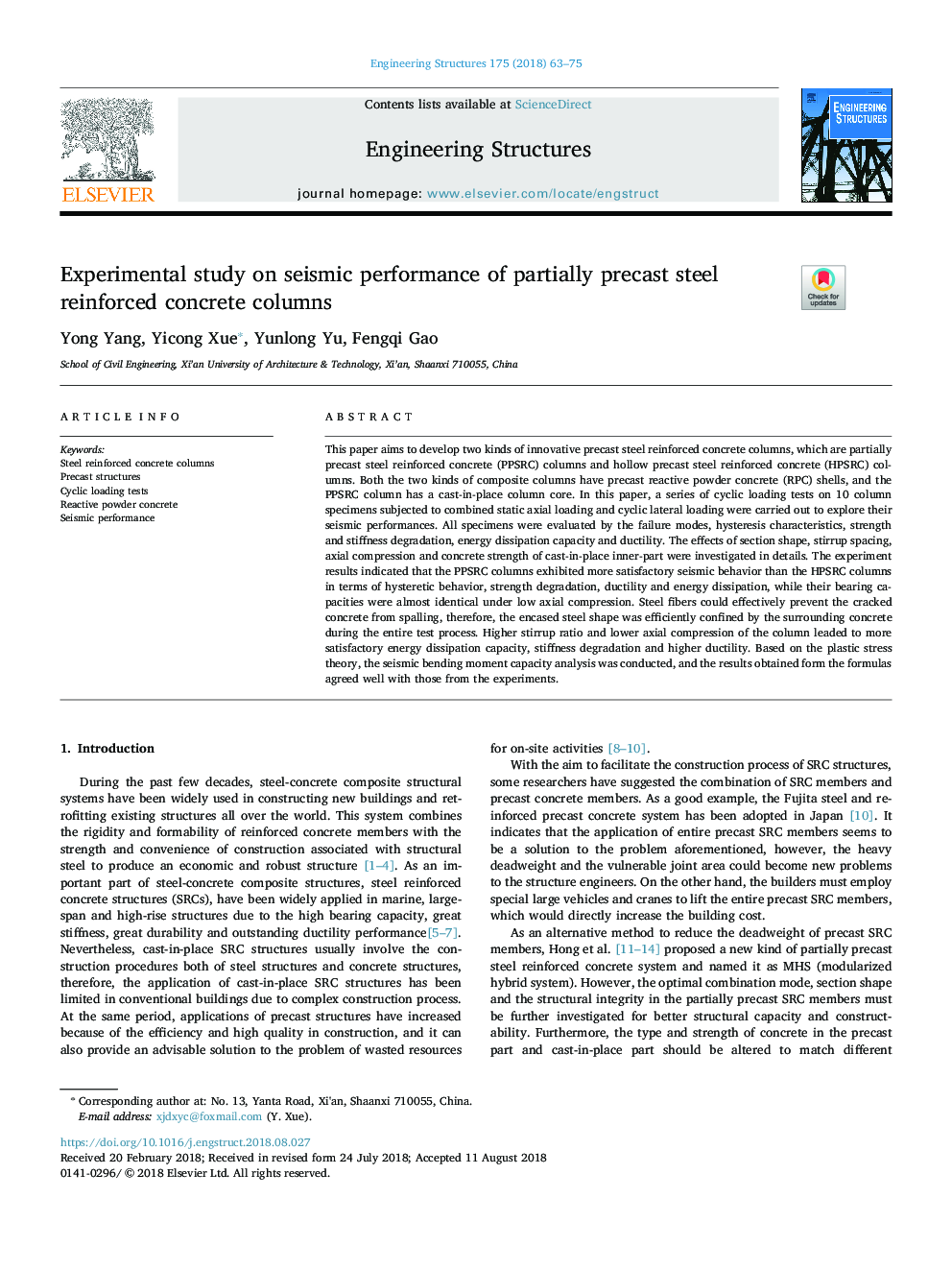| Article ID | Journal | Published Year | Pages | File Type |
|---|---|---|---|---|
| 8941563 | Engineering Structures | 2018 | 13 Pages |
Abstract
This paper aims to develop two kinds of innovative precast steel reinforced concrete columns, which are partially precast steel reinforced concrete (PPSRC) columns and hollow precast steel reinforced concrete (HPSRC) columns. Both the two kinds of composite columns have precast reactive powder concrete (RPC) shells, and the PPSRC column has a cast-in-place column core. In this paper, a series of cyclic loading tests on 10 column specimens subjected to combined static axial loading and cyclic lateral loading were carried out to explore their seismic performances. All specimens were evaluated by the failure modes, hysteresis characteristics, strength and stiffness degradation, energy dissipation capacity and ductility. The effects of section shape, stirrup spacing, axial compression and concrete strength of cast-in-place inner-part were investigated in details. The experiment results indicated that the PPSRC columns exhibited more satisfactory seismic behavior than the HPSRC columns in terms of hysteretic behavior, strength degradation, ductility and energy dissipation, while their bearing capacities were almost identical under low axial compression. Steel fibers could effectively prevent the cracked concrete from spalling, therefore, the encased steel shape was efficiently confined by the surrounding concrete during the entire test process. Higher stirrup ratio and lower axial compression of the column leaded to more satisfactory energy dissipation capacity, stiffness degradation and higher ductility. Based on the plastic stress theory, the seismic bending moment capacity analysis was conducted, and the results obtained form the formulas agreed well with those from the experiments.
Related Topics
Physical Sciences and Engineering
Earth and Planetary Sciences
Geotechnical Engineering and Engineering Geology
Authors
Yong Yang, Yicong Xue, Yunlong Yu, Fengqi Gao,
